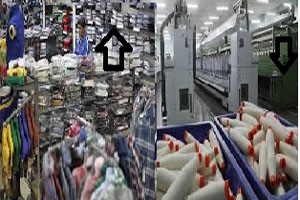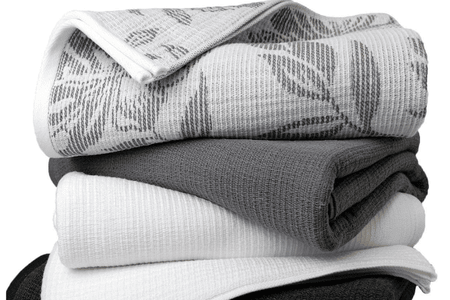
Performance of Indian garment exports likely to better than textiles
YarnsandFibers News Bureau 2015-09-25 10:00:00 – New DelhiIndian garments export likely to continue performing better than those of textiles for some more time due to wider geographical spread of its export markets. While textile exports is affected due to an excessive dependence on China, reports Banikinkar Pattanayak in New Delhi. Textile exports include a range of products such as raw cotton, yarn, fabrics, made-ups, carpets, jutes, etc.
China is the biggest market for textiles, accounting for over 70% of India’s cotton and 40% of yarn supplies, while the US and EU are the largest markets for Indian apparel, making up for roughly 65% of the country’s garment exports.
Given that China is predicted to slow further in 2015 as well as 2016 while the US economy seems to have turned the corner and Europe is on its way towards a fragile recovery as indicated by the IMF forecasts on global growth.
According to senior textile industry executives, even the depreciation of the rupee against the dollar isn’t going to help Indian textile exporters much, as the recent yuan devaluation by China has made its imports more expensive.
However, the fact that the rupee has depreciated more than currencies of other garment-exporting countries such as Bangladesh and Vietnam this year, outbound shipments of apparel may not be affected much. Then again, biggest rival China would be more competitive in the garment export market following the yuan devaluation. The withdrawal of certain shipment incentives under the foreign trade policy for 2015-20 just made the matter worse for Indian textile exporters.
Exports of raw cotton and waste crashed by 58% during the April-July period from a year before, those of man-made yarn dropped nearly 6% during this period. However, some of the other textile segments, such as jute and carpets, have performed well during the April-July period (exports of jute grew 13.2% and those of carpets rose 12.3%), helping the overall textile exports achieve an under 1% rise up to July this fiscal.
It is not just textile exports are down and the production of textiles dropped in July from a year before, while garments gained 21.7% during the month, according to the industrial output data.
Moreover, the spinning mills in India for the first time in five years to prop up prices have now started cutting down on production. The government is also yet to clear subsidy claims of around Rs 4,500 crore for investments made under the flagship Technology Upgradation Fund Scheme has added to the liquidity woes of textile units, especially the spinning mills
This means that while export demand remains weak, even domestic consumption will not pick up in textiles.
Market Intelligence
Ask for free sample Report

experience
Customer Base
dedicated team
Countries Served Worldwide









